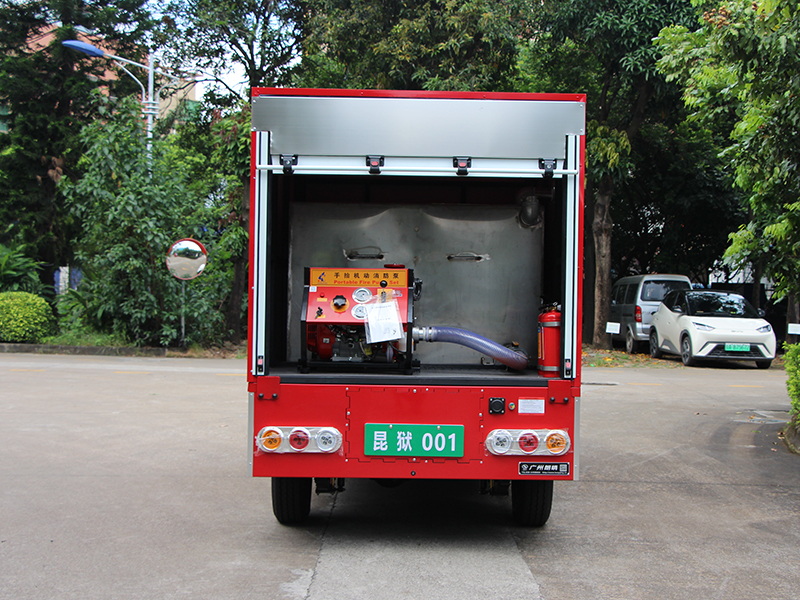Content Menu
● The Rise of Electric Ambulances in 2025
● Purchase Price of Electric Ambulances in 2025
● Operational Costs: Electric vs. Diesel Ambulances
>> Running Costs Comparison
>> Maintenance and Reliability
● Performance and Practical Benefits
>> Range and Battery
● Government Incentives and Funding
● Environmental and Social Impact
● Conclusion
● FAQ
>> 1. What is the average purchase price of an electric ambulance in 2025?
>> 2. How do the running costs of electric ambulances compare to diesel ambulances?
>> 3. Are there government incentives available for buying electric ambulances?
>> 4. What is the typical range of an electric ambulance on a single charge?
>> 5. How long does it take to charge an electric ambulance?
Electric ambulances are rapidly becoming a vital part of emergency medical services worldwide, offering a cleaner, quieter, and more cost-efficient alternative to traditional diesel-powered ambulances. As of 2025, the adoption of electric ambulances is accelerating, driven by their operational benefits and environmental advantages. This article explores the electric ambulance cost in 2025, including purchase price, running expenses, incentives, and the overall economic impact on healthcare services.

The Rise of Electric Ambulances in 2025
Electric ambulances are no longer a futuristic concept but an active reality in many countries. For example, the London Ambulance Service has integrated electric ambulances into its fleet, with plans to expand significantly by 2026. These vehicles are powered by advanced lithium-ion batteries and electric drivetrains, providing sufficient range and performance for emergency response duties.
The shift towards electric ambulances represents a significant transformation in emergency medical transportation. Driven by environmental concerns, advancements in battery technology, and the economic benefits of reduced operational costs, many healthcare providers and government agencies are investing in electric ambulance fleets. This transition aims to reduce carbon emissions, improve air quality, and provide a more sustainable approach to emergency medical services.
Purchase Price of Electric Ambulances in 2025
The upfront cost of an electric ambulance remains higher than that of traditional diesel models, primarily due to the expensive battery technology and electric drivetrain components. As of 2025:
- A fully equipped electric ambulance costs approximately £180,000 (about $220,000 USD).
- This price reflects the vehicle chassis, electric powertrain, medical equipment, and specialized ambulance body.
Despite the higher initial investment, several government incentives help reduce the net purchase price. For example, in the United States, federal incentives can provide up to $100,000 toward the purchase of an electric ambulance, directly lowering the acquisition cost. These incentives are crucial in encouraging healthcare providers to adopt electric vehicles, bridging the gap between initial costs and long-term savings.
Operational Costs: Electric vs. Diesel Ambulances
One of the most significant advantages of electric ambulances is their lower operational cost compared to diesel ambulances.
Running Costs Comparison
| Cost Aspect | Electric Ambulance | Diesel Ambulance |
| Cost per mile | 7p (pence) / mile | 27p / mile |
| Annual mileage | 30,000 miles | 30,000 miles |
| Annual running cost | £2,100 | £8,100 |
The London Ambulance Service reports that running an electric ambulance costs only about £2,100 annually based on 30,000 miles, compared to £8,100 for a diesel ambulance of the same model. The cost savings are primarily due to the lower price of electricity compared to diesel fuel and the increased efficiency of electric drivetrains. These savings can be redirected towards improving patient care or investing in other essential healthcare services.
Maintenance and Reliability
Electric ambulances require less maintenance because they have fewer moving parts and no need for oil or filter changes. The London Ambulance Service noted zero breakdowns and no electric component faults in the first year of operation, resulting in more time on the road and less downtime. Traditional ambulances require frequent maintenance, including oil changes, filter replacements, and engine repairs, which can be costly and time-consuming. The reduced maintenance requirements of electric ambulances contribute to lower operational costs and increased vehicle availability.

Performance and Practical Benefits
Electric ambulances offer several performance benefits:
- Quieter operation: Reduced noise and vibrations improve patient comfort and allow paramedics to provide better care during transport.
- Faster acceleration: Electric ambulances accelerate more quickly (0 to 30 mph) than diesel models, which can be critical in emergencies.
- Charging time: A full recharge takes about 30 minutes with fast charging, often done during cleaning or patient handover. Some models offer charging options from 1.5 to 5 hours depending on power level.
The quiet operation of electric ambulances also reduces noise pollution in urban environments, contributing to a more pleasant and peaceful atmosphere for residents. Faster acceleration ensures that paramedics can reach patients quickly, potentially improving outcomes in critical situations.
Range and Battery
Modern electric ambulances typically have a range of 200-250 km (124-155 miles) per charge, sufficient for urban and suburban emergency response. Interim charging at hospitals or stations extends operational availability throughout the day. Battery technology is continually improving, leading to increased range and faster charging times. This makes electric ambulances more practical and reliable for emergency medical services.
The location of charging stations is a critical factor in the operational effectiveness of electric ambulances. Strategic placement of charging stations at hospitals, fire stations, and other key locations ensures that ambulances can quickly recharge and remain in service.
Government Incentives and Funding
To encourage adoption, governments and health organizations offer incentives:
- In the U.S., federal grants can reduce the purchase price by $100,000 or more.
- In the UK, ambulance trusts are investing millions to expand electric ambulance fleets, supported by national frameworks for vehicle conversions and specifications.
These incentives help offset the higher upfront cost and promote sustainable emergency services. Governments and healthcare organizations are increasingly recognizing the benefits of electric ambulances and are providing financial support to accelerate their adoption.
In addition to purchase incentives, some governments offer tax credits and other financial benefits to organizations that operate electric ambulance fleets. These incentives can further reduce the overall cost of ownership and make electric ambulances a more attractive option for healthcare providers.
Environmental and Social Impact
Electric ambulances contribute to reducing greenhouse gas emissions and air pollution, aligning with global climate goals. Additionally, their quiet operation minimizes noise pollution in residential areas, improving community well-being. The environmental benefits of electric ambulances are significant, particularly in urban areas where air pollution can be a major health concern. By reducing emissions, electric ambulances help improve air quality and protect public health.
The social impact of electric ambulances extends beyond environmental benefits. The quieter operation of these vehicles can improve the quality of life for patients and paramedics, reducing stress and fatigue. The use of electric ambulances also demonstrates a commitment to sustainability and social responsibility, which can enhance an organization's reputation and attract environmentally conscious employees and customers.
Conclusion
The electric ambulance cost in 2025 reflects a significant upfront investment of around £180,000, but this is balanced by substantially lower running costs, reduced maintenance, and government incentives. Electric ambulances offer enhanced performance, quieter operation, and environmental benefits, making them a compelling choice for modern emergency medical services. As adoption grows, economies of scale and technological advances are expected to reduce costs further, increasing accessibility and affordability for healthcare providers worldwide.

FAQ
1. What is the average purchase price of an electric ambulance in 2025?
The average cost is about £180,000 ($220,000 USD), including medical equipment and specialized ambulance body.
2. How do the running costs of electric ambulances compare to diesel ambulances?
Electric ambulances cost approximately 7p per mile to run, compared to 27p per mile for diesel, resulting in annual savings of nearly £6,000 based on 30,000 miles.
3. Are there government incentives available for buying electric ambulances?
Yes, for example, the U.S. federal government offers up to $100,000 in incentives to reduce the purchase price of electric ambulances.
4. What is the typical range of an electric ambulance on a single charge?
Electric ambulances typically have a range of 200-250 km (124-155 miles), suitable for most urban emergency routes.
5. How long does it take to charge an electric ambulance?
Charging times vary from about 30 minutes with fast chargers to 1.5-5 hours depending on the power source.










































